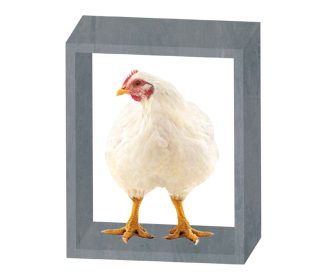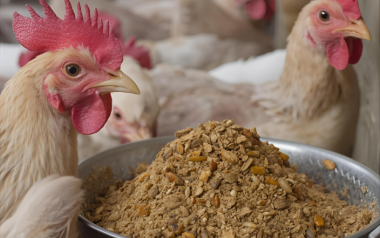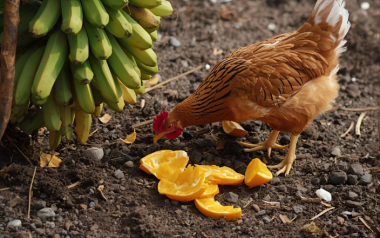Other parameters of interest to determine the nutritional value of soybean meal
20 Aug 2022
Use of soybean by-products in animal feed, nutritional value, and quality control
Soybean meal is the primary source of protein and amino acids –AA– in feed formulation for livestock worldwide, especially in the case...
Available in other languages:
Content available at:
Español (Spanish)
Soybean meal is the primary source of protein and amino acids –AA– in feed formulation for livestock worldwide, especially in the case of monogastric animals. Due to its high level of use, especially in poultry diets– the lack of uniformity of this raw ingredient is much more relevant than the other raw materials in the formula.
Soy is a quality vegetable source with a less variable chemical composition than other protein sources, favoring high levels of inclusion in the feed.
In many practical situations, the quality control of soybean meal and its by-products is reduced to analyzing its moisture content, crude fiber, crude protein –CP– and urease activity.
Certain additional parameters are essential to determine the nutritional value of soybean meal:
- Sugar content,
- NDF –Neutral Detergent Fiber–
- AA Profile Content in trypsin inhibitors –TI
- Maillard reactions
- Solubility in KOH
These parameters are of interest since they allow us to correctly evaluate this ingredient’s nutritional value. These variables, however, are subject to significant variations depending on:
- The genotype of the seed
- Soil type
- Environmental conditions during the growth phase –Westgate et al., 2000–
- Processing characteristics –Grieshop et al., 2003–
- Storage time–Serrano et al., 2013–
- Presence of antinutritional factors –Karr-Lilienthal et al., 2004; Frikha et al. 2012–
- Country of origin of the broad bean –Ravindran et al., 2014; García Rebollar et al., 2014 and 2016–.
Objectives
- To identify the main factors that affect the profile and nutritional quality of soybean meal.
- To define and evaluate the different methodologies that allow its assessment.
- To determine possible improvements in quality control faced by the feed manufacturing industry.
Different by-products from raw soybeans can be found on the market depending on the type and level of processing –Figure 1–.
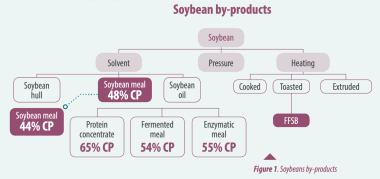
Soybean meal represents the highest cost of all the raw materials that enter a feed mill, so improving the currently used method for its quality control is necessary. It is noteworthy that most soybean quality control programs aim to determine its protein value, with little impact on the energy value, reducing its practical value.
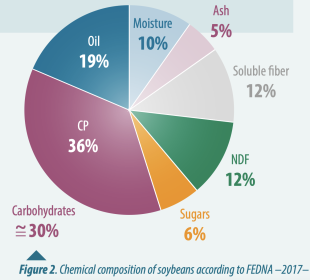
The whole soybean with 36% CP –Figure 2– is hulled to reduce the costs of the process, and the rest of the seed, once prepared, is subjected to thermal heating to reduce the content of anti-nutritional factors. Subsequently, the soybean oil is extracted using solvents, obtaining soybean meal –48% CP–.
Frequently, part of the hull separated at
TO CONTINUE READING REGISTER IT IS COMPLETELY FREE
Access to articles in PDF
Keep up to date with our newsletters
Receive the magazine for free in digital version
REGISTRATION
ACCESS
YOUR ACCOUNT
LOGIN
Lost your password?







